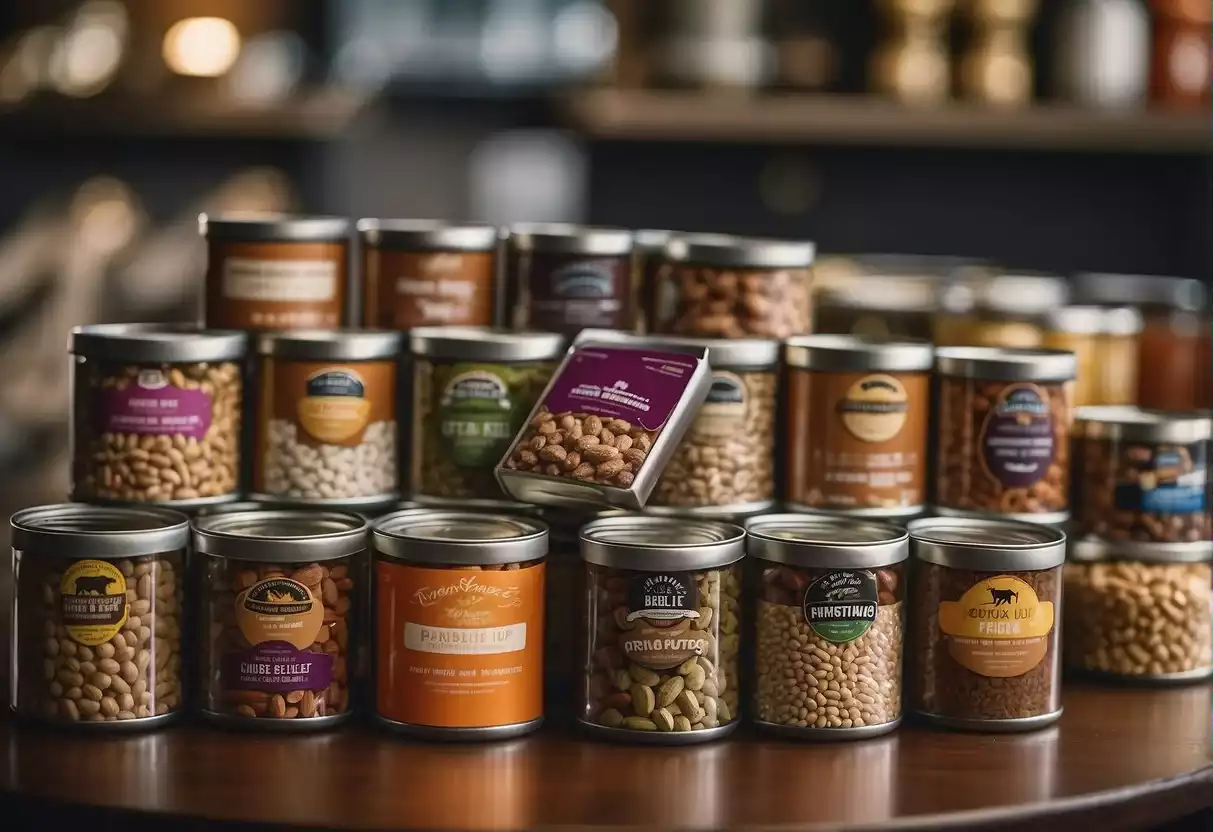As a dog owner, one of the most important decisions you have to make is what kind of food to give your furry friend. With so many options available, it can be difficult to choose the right one. In this article, I’ll give you an overview of the most common types of dog food and their benefits, so that you can make an informed decision about different types of dog food.
First up, we have dry food. This is the most popular type of dog food, and for good reason. Dry food is practical, durable, and affordable, making it ideal for busy pet owners. It’s also great for dogs’ dental health, as the crunchy texture helps to remove plaque and tartar. Plus, it comes in a variety of formulations to meet the nutritional needs of dogs of all ages and sizes.
If your dog is a picky eater or has trouble chewing, wet food may be a better option. This type of food is tasty and moisturizing, making it perfect for dogs who demand a little extra flavor. However, it can be a bit more expensive than dry food and needs to be refrigerated after opening. Additionally, some dogs may have trouble digesting wet food, so it’s important to introduce it slowly and monitor their reaction.
Another option is natural or homemade food. This is a growing trend among dog owners who want to provide their pets with a diet that’s rich in essential nutrients. However, it’s important to note that this type of food requires careful attention to ensure a balanced diet. It’s also important to consult with a veterinarian to make sure your dog is getting all the nutrients they need.
Different Types of Dog Food: Dry Food Benefits

Dry food is a popular option for many dog owners due to its many benefits. As someone who has owned dogs for years, I can attest to the convenience and dental health benefits of dry food.
Convenience and Dental Health
One of the main benefits of dry dog food is its convenience. It is easy to store and transport, making it ideal for busy pet owners who are always on the go. Additionally, dry food helps with dogs’ dental health by reducing the buildup of tartar and plaque on their teeth. The crunchy texture of dry food helps to scrape away food particles and bacteria, promoting good oral health.
Affordability and Nutritional Formulations
Dry food is also an affordable option for pet owners. It is widely available and comes in a variety of brands, making it easy to find a product that fits your budget. Additionally, dry food is formulated to meet the nutritional needs of dogs of all ages and sizes. Many brands offer specific formulations for different nutritional needs, such as weight management or joint health.

Wet Food Advantages
Wet dog food has several advantages that make it a popular choice among pet owners. Here are some of the benefits of feeding your dog wet food:
Taste and Hydration
Wet dog food is more palatable than dry food, making it an excellent choice for picky eaters. The high moisture content in wet food also helps keep your dog hydrated, which is essential for their overall health and well-being. Dogs that don’t drink enough water on their own will benefit from the additional hydration provided by wet food.
Suitable for Special Dietary Needs
Wet dog food is available in a variety of formulations, making it suitable for dogs with special dietary needs. For example, there are wet dog foods specifically designed for dogs with food sensitivities, allergies, and digestive issues. Additionally, wet food can be an excellent option for dogs that have trouble chewing or swallowing, such as senior dogs or those with dental problems.
When selecting wet food for your dog, make sure to choose a high-quality option that meets their nutritional needs. Look for wet food that contains real meat as the first ingredient and is free from artificial preservatives, colors, and flavors.

Grain-Free Options
As I mentioned earlier, grain-free dog food is an excellent option for dogs with food sensitivities. It is made without ingredients like corn, wheat, soybeans, and oats, which can cause allergies and digestive problems in some dogs. Instead, grain-free dog food is made with alternative ingredients like potatoes, sweet potatoes, peas, beans, lentils, chickpeas, or other legume seed pulses.
Managing Food Sensitivities
If your dog has food sensitivities, it’s important to find a grain-free dog food that provides essential nutrients. Look for a brand that uses high-quality protein sources like chicken, beef, lamb, or fish. You can also find grain-free dog food that is specially formulated for dogs with specific sensitivities, such as limited ingredient diets.
When switching to a grain-free diet, make sure to do it gradually. Start by mixing a small amount of the new food with your dog’s current food and gradually increase the amount over a week or two. This will help your dog’s digestive system adjust to the new food and reduce the risk of stomach upset.
Natural and Homemade Diets

As a dog owner, I understand the importance of providing my furry friend with a balanced and nutritious diet. Natural and homemade food is a growing trend among dog owners, but it requires attention to ensure a balanced diet rich in essential nutrients.
Ensuring a Balanced Diet
When preparing natural and homemade food for your dog, it’s essential to ensure that their diet is balanced and contains all the necessary nutrients. Here are some tips to help you achieve a balanced diet:
- Include a variety of protein sources such as chicken, beef, fish, and eggs to ensure that your dog gets all the essential amino acids they need.
- Incorporate a variety of vegetables such as carrots, sweet potatoes, and green beans to provide your dog with essential vitamins and minerals.
- Add healthy fats such as fish oil or flaxseed oil to support your dog’s skin and coat health.
- Avoid using ingredients that are toxic to dogs such as onions, garlic, and chocolate.
Choosing the Right Food
As a dog owner, choosing the right food for your furry friend is essential to their overall health and well-being. With so many different options available, it can be overwhelming to know where to start. Here are some tips to help you choose the right food for your dog.
Indications for Different Dog Types

When selecting a dog food, it’s important to consider your dog’s age, size, and nutritional needs. Different types of dogs have different requirements, and choosing a food that is tailored to their needs can help ensure they receive the proper nutrition.
For example, puppies require a diet that is high in protein and fat to support their growth and development. Senior dogs, on the other hand, may benefit from a diet that is lower in calories and higher in fiber to support their aging bodies.
Additionally, dogs with certain health conditions may require a specialized diet. For example, dogs with food sensitivities may benefit from a grain-free diet, while dogs with kidney disease may require a low-protein diet.
When selecting a dog food, be sure to read the label carefully and look for indications that the food is appropriate for your dog’s specific needs. If you’re unsure what type of food is best for your dog, consult with your veterinarian for guidance.








